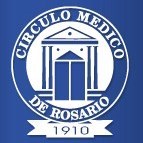Genetic hypercalcemic hypocalciuria in a prepubertal boy
Keywords:
Familial hypocalciuric hypercalcemia, Genetics, Calcium sensor-receptor, CinacalcetAbstract
A 12-year-old patient who consulted for recurrent vomiting associated with headaches, with several episodes for 7 months, and low body weight. The patient had previously received treatment with antibiotics and proton pump inhibitors, due to gastritis with Helicobacter pylori, after gastric biopsy performed during videoendoscopy. His family history is unknown because he is an adopted son. At physical examination the patient was thin, without neck tumor; he had prepubertal genitalia. As he patient continued with recurrent vomiting, he was admitted for further evaluation. Laboratory studies revealed hypercalcemia (13.2-13.6 mg/dl), accompanied by hypophosphatemia (2.7 mg/dl). With a presumptive diagnosis of primary hyperparathyroidism, complementary determinations were performed: total and high total and ionized serum calcium (12.1 and 5.6 mg/dl, respectively), normal serum alkaline phosphatase (151 mU/ml), and PTH (47.1 pg/ml), and normal serum 25(OH) vitamin D (32 ng/ml). The ultrasonography of thyroid and parathyroid glands showed a rounded hypoechoic, avascular image, 4 mm in diameter in the lower right parathyroid topography. A parathyroid imaging studies were performed: scintigraphy with 99mTc-MIBI and PET-CT with 18F-choline, but no abnormal uptake was observed. New laboratory studies were carried out: in 24-hour urine the calcium was 19 mg, the urinary calcium/creatinine ratio was 0.03 mg/mg, the tubular reabsorption of phosphorus was normal (82%) and the ratio of clearances rates of calcium and creatinine very low (0.00046). Serum CTX was low. The clinical diagnosis was hypocalciuric hypercalcemia; in the absence of a family history, a study of possible point mutations in the calcium receptor gene (CaSR) was carried out; there was a heterozygous mutation: p.Arg185Gln (p.R185Q) at position 554 (c.554G)>A) of exon 4 of the CaSR gene. This involves the exchange of an arginine for glutamine at codon 185 of the protein, and confirms the genetic origin of the hypocalciuric hypercalcemia in our patient. Bone age was 12 years, and a treatment with testosterone i.m. at low doses to accelerate pubertal development was started; after 4 monthly applications height has increased by 4 cm and weight by 3 kg. Loss of appetite and a weekly episode of postprandial vomiting continued during one yeas, but now his appetite is normal and vomiting has subsided. A subcutaneous application of denosumab (60 mg) did not control hypercalcemia. He has been prescribed oral cinacalcet.
Downloads
References
2. Christensen SE, Nissen PH, Vestergaard P, Mosekilde L. Familial hypocalciuric hypercalcaemia: a review. Curr Opin Endocrinol Diabetes Obes 18:359-70, 2011.
3. Christensen SE, Nissen PH, Vestergaard P, y col. Discriminative power of three indices of renal calcium excretion for the distinction between familial hypocalciuric hypercalcaemia and primary hyperparathyroidism: a followup study on methods. Clin Endocrinol 69: 713-20, 2008.
4. Guarnieri V, Canaff L, Yun FHJ, y col. Calciumsensing receptor (CASR) mutations in hypercalcemic states: studies from a single endocrine clinic over three years. J Clin Endocrinol Metab 95: 1819-29, 2010.
3. Vargas-Poussou R, Mansour-Hendili L, Baron S, y col. Familial hypocalciuric hypercalcemia types 1 and 3 and primary hyperparathyroidism: similarities and differences. J Clin Endocrinol Metab 101: 2185-95, 2016.
4. Pallais JC, Kemp EH, Bergwitz C, y col. Autoimmune hypocalciuric hypercalcemia unresponsive to glucocorticoid therapy in a patient with blocking autoantibodies against the calcium-sensing receptor. J Clin Endocrinol Metab 96: 672-80, 2011.
5. Marx SJ. Calcimimetic use in familial hypocalciuric hypercalcemia. A perspective in Endocrinology. J Clin Endocrinol Metab 102: 3933-6, 2017.
6. Gorvin CM, Hannan FM, Cranston T, y col. Cinacalcet rectifies hypercalcemia in a patient with familial hypocalciuric hypercalcemia type 2 (FHH2) caused by a germline loss-of-function Ga11 mutation. J Bone Miner Res 33: 32-41, 2018.
7. Gannon AW, Monk HM, Levine MA. Cinacalcet monotherapy in neonatal severe hyperparathyroidism: a case study and review. J Clin Endocrinol Metab 99:7-11, 2014.
8. Sarli M, Fradinger E, Zanchetta J. Hypocalciuric hypercalcemia due to de novo mutation of the calcium sensing receptor. Medicina (B Aires) 64: 337-9, 2004.
9. Bosco MB, Diehl M, Galich AM, Jäger V, Massaro E, Plantalech L. Hipercalcemia hipocalciúrica familiar en una paciente con mutación del receptor de calcio: forma atípica de presentación y tratamiento con cinacalcet. Actual Osteol 13: 69-79, 2017.
How to Cite
Issue
Section
License
Licencia Atribución-CompartirIgual 4.0 Internacional (CC BY-SA 4.0)
https://creativecommons.org/licenses/by-sa/4.0/deed.es






